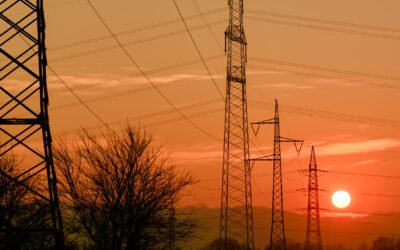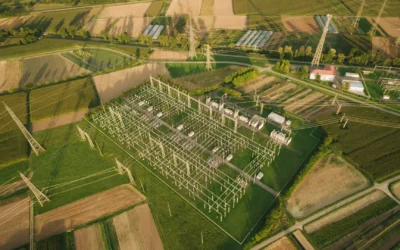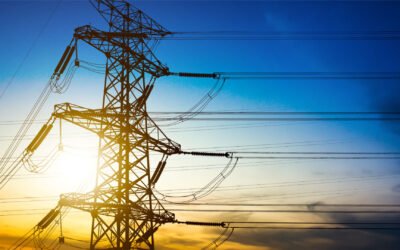Attending ADIPEC 2024 was an insightful experience. The event offered a collaborative environment for meaningful discussions on the energy transition. Working in the power sector and predicting this pivotal energy shift for years, it was great to see PTR’s analysis and insights into the energy sector getting validated by the attendees.
Top policymakers, industry leaders, and influential figures from the power and technology sectors attended and spoke about the opportunities and challenges they face in their energy transition efforts. The scale of the event underscored its significance in driving progress across the energy sector. Here are some key takeaways and reflections I gathered during my time there.
Key Themes and Focus Areas
This year’s overarching themes included decarbonization, AI and innovation, equitable energy transition, and cross-sector collaboration. The conference reinforced that these technologies are not mere buzzwords; they embody the real opportunities and challenges that define the trajectory of our industry today.
Together, these themes revealed an industry at the crossroads of innovation and responsibility. Here’s how I would like to summarize it:
-
-
- Switching to renewables isn’t the only way to achieve decarbonization. It requires innovation in energy storage, grid stability, and resource management.
-
- This is where AI integration can step up the game by enhancing grid intelligence and ensuring stability, especially as modern energy sources are intermittent.
-
- The energy transition ties it all together, reflecting the critical value of collaboration across the entire value chain—from policymakers and technology providers to developers and grid operators.
-
ADIPEC Highlights
ADIPEC offered valuable insights for stakeholders driving the energy transition. Here are some of the key takeaways:
-
-
- Starting with the host country, UAE, which has plans to triple its renewable energy capacity, focusing on innovative energy storage. Beyond its national target, the UAE collaborates with more than 40 countries and sets a global benchmark. It pertains to a shared goal for technological advancements and an economic model for sustainable transformation.
-
-
-
- Resource-limited countries are emphasizing the transition to clean energy resources not only to achieve environmental stability but also to utilize this opportunity for economic growth. Nations without oil and gas resources must view this energy transition as an opportunity for diversification, economic advancement, and energy security.
-
-
-
- For a green future to exist, there is a need to find a balance between clean energy and traditional fuels. Renewable energy sources contribute to over 30% of world electricity consumption, so we still rely heavily on fossil fuels. This transition cannot occur in one day, but it’s an ongoing process.
-
- AI has transformative potential. Combined with digital twins, it has proved to be a game-changer for energy infrastructure assets. This synergy can significantly enhance efficiency and resource optimization.
-
- Hydrogen has emerged as a key component in achieving net-zero carbon emissions by 2050, particularly for heavy industries such as steel, chemicals, and cement. These industries find it harder to decarbonize with traditional methods; however, hydrogen can offer a sustainable energy equivalent for these as well.
-
- Stability in the political and institutional environment is crucial for projects with payback periods stretching 8-15 years. Several industry leaders emphasized how sudden policy shifts or economic uncertainties derail even the most promising projects. Long-term investment will only see fruition if there is a certain harmony between these two.
-
- The energy transition requires efforts from every stakeholder involved. We must see it as a shared goal instead of a singular interest. Only with unified efforts can we turn this vision into reality. From the power sector to AI firms, private sector to government, we need to play our part. Achieving net-zero emissions is not a competition; it’s a collective effort, and every contribution matters.
-
- Initiatives to reduce carbon emissions often overlook the need to target the root cause. A big focus remains on electric vehicles (EVs) and renewables, which address only 25% of the problem. In reality, the most significant contributors, like oil, gas, cement, and steel industries, still get off with just a slap on the wrist.
-
Insights from several discussions at ADIPEC aligned with PTR’s findings, especially on topics like renewables, electrification, power grid, and hydrogen. Our analysis has consistently anticipated strong tailwinds driving the growth of grid infrastructure demand to support the energy transition, particularly with the rise of renewable energy integration and electric vehicle charging infrastructure. However, we strongly feel that addressing persistent supply chain bottlenecks remains essential to prevent disruptions and ensure timely project execution if countries wish to achieve their short- and long-term targets.
Beyond the sessions by industry experts and leaders from across the globe, ADIPEC proved to be a valuable experience in establishing connections with visionaries and innovators under one roof.
Let’s start an open discussion regarding the role of decarbonization and AI in shaping the future of energy. What strategies do you think are essential for a successful transition? How can we achieve clean energy goals while balancing innovation and sustainability?
Europe: +49-89-12250950
Americas: +1 408-604-0522
Japan: +81-80-7808-1378
GCC/Rest of APAC: +971-58-1602441
More About our: Services
Recent Insights
US Elections: Consequences of a Second Trump Presidency for Energy Sector
The US is making strides to move away from fossil fuels and eventually decarbonize the energy sector. The White House aims to achieve 80% renewable energy generation by 2030 and 100% carbon-free electricity by 2035. On the other hand, for electric vehicles, it has set...
Sustainability Across Sectors: Highlights from GreenTech Festival 2024
Recently, I had the privilege to attend and present at the Greentech Festival, an excellent event in the realm of sustainability. This influential gathering left a profound impact, and I am delighted to share a comprehensive analysis of my experiences. The Greentech...
HVDC as the Backbone of Offshore Wind Expansion in the North Sea
This infographic discusses how the expansion of offshore wind in the North Sea will drive the HVDC market in Europe.HVDC as the Backbone of Offshore Wind Expansion in the North SeaKey Trends in the HVDC MarketOffshore wind will drive HVDC deployment in the North Sea,...
US Elections: Consequences of a Second Trump Presidency for Energy Sector
The US is making strides to move away from fossil fuels and eventually decarbonize the energy sector. The White House aims to achieve 80% renewable energy generation by 2030 and 100% carbon-free electricity by 2035. On the other hand, for electric vehicles, it has set...
Sustainability Across Sectors: Highlights from GreenTech Festival 2024
Recently, I had the privilege to attend and present at the Greentech Festival, an excellent event in the realm of sustainability. This influential gathering left a profound impact, and I am delighted to share a comprehensive analysis of my experiences. The Greentech...
HVDC as the Backbone of Offshore Wind Expansion in the North Sea
This infographic discusses how the expansion of offshore wind in the North Sea will drive the HVDC market in Europe.HVDC as the Backbone of Offshore Wind Expansion in the North SeaKey Trends in the HVDC MarketOffshore wind will drive HVDC deployment in the North Sea,...
Powering Europe’s Future: The Surge of Interconnected HVDC Networks
The European HVDC market is poised for significant growth as it aligns with the expansion of offshore wind projects. European countries are planning to add 70 GW of offshore wind. The European Commission has set forth ambitious objectives, aiming to double...



